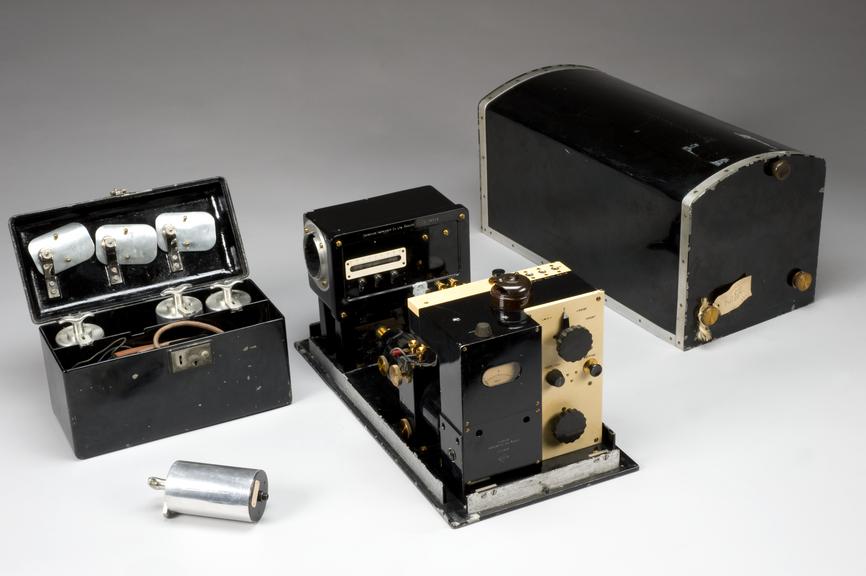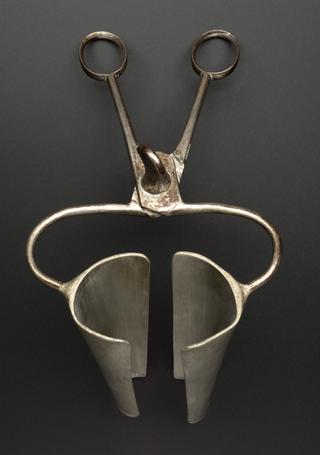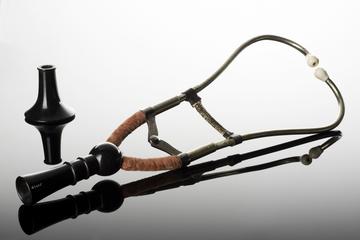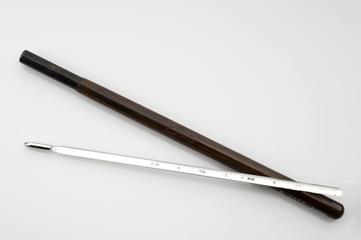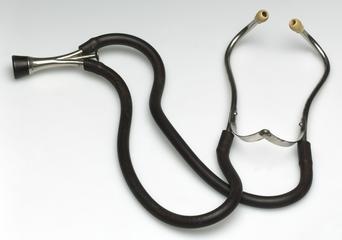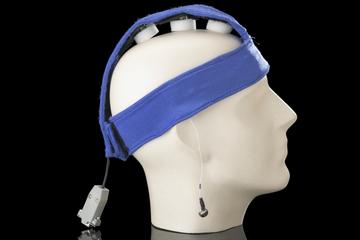Portable electrocardiograph machine, Cambridge, England, 1928
Portable electrocardiograph machine, with film holder case, No. C109509, by the Cambridge Instrument Co. Ltd., 1928
More
Electrocardiographs (ECG) detect heart rhythms by measuring electrical activity. ECGs can detect heart problems such as artery disease, enlarged hearts and abnormal rhythms. Early machines were large and difficult to use. Patients had to soak their limbs in salt solution before an ECG could be taken. Cardiac monitors are now used extensively in hospitals. They are found in operating theatres, delivery suites and intensive care units. The first commercial ECG machine was developed by the Cambridge Scientific Instrument Company in 1908.
An electrocardiogram is the visible result produced by the electrocardiograph. The first human electrocardiogram was made by Englishman A. D. Waller (1856-1922) in 1887. However, the modern practice of electrocardiography was made possible by the ‘string galvanometer’. This device was invented around 1903 by Dutch physiologist Willem Einthoven (1860-1927). Einthoven won the Nobel Prize for Physiology/Medicine for his invention.
- Materials:
- aluminium (metal) and brass (copper, zinc alloy)
- Object Number:
- 1989-577/1
- type:
- electrocardiograph
